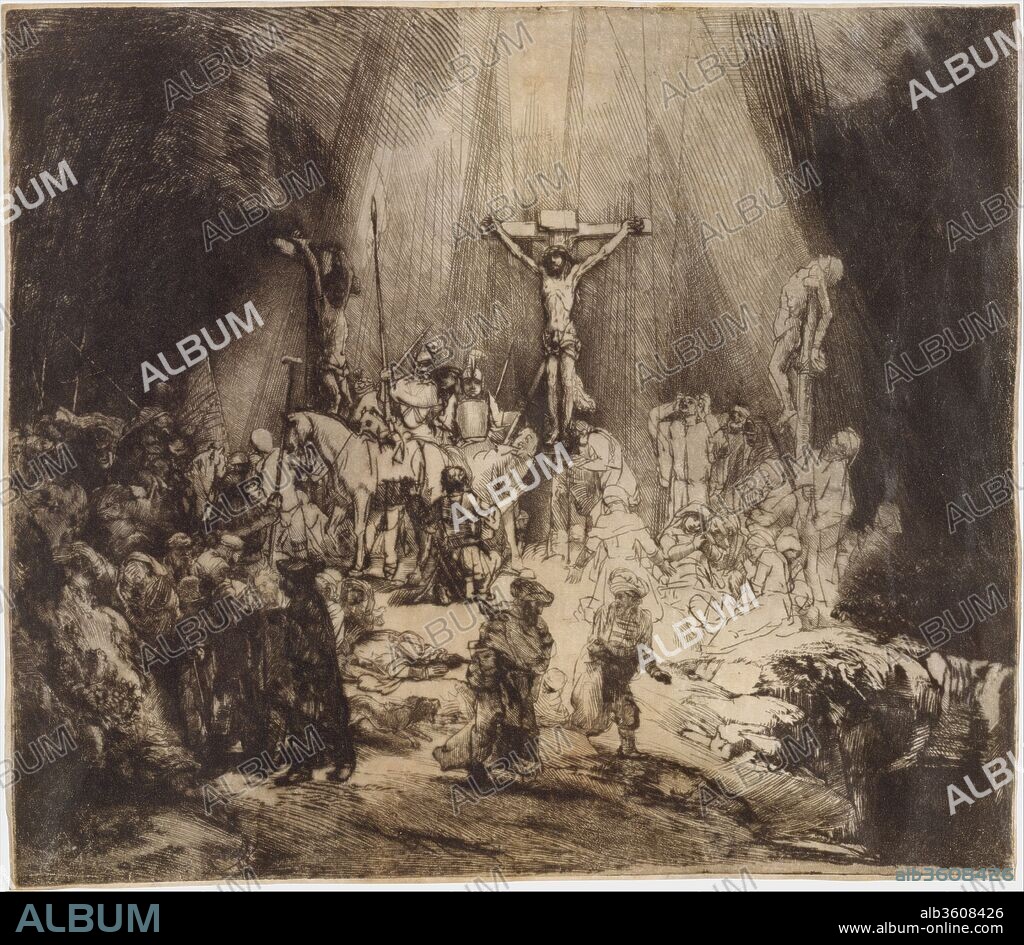alb3608426
REMBRANDT (REMBRANDT VAN RIJN). Christ Crucified between the Two Thieves: The Three Crosses

|
Añadir a otro lightbox |
|
Añadir a otro lightbox |



¿Ya tienes cuenta? Iniciar sesión
¿No tienes cuenta? Regístrate
Compra esta imagen.
Selecciona el uso:

Título:
Christ Crucified between the Two Thieves: The Three Crosses
Descripción:
Ver traducción automática
Christ Crucified between the Two Thieves: The Three Crosses. Artist: Rembrandt (Rembrandt van Rijn) (Dutch, Leiden 1606-1669 Amsterdam). Dimensions: Plate: 15 x 17 1/4 in. (38.1 x 43.8 cm)
Sheet: 15 1/8 x 17 7/16 in. (38.4 x 44.3 cm)
Mount: 22 x 28 in. (55.9 x 71.1 cm). Date: 1653.
The Three Crosses, one of Rembrandt's finest works in any medium, represents the culmination of his virtuosity as a printmaker. He drew on the copperplate entirely in drypoint which allowed him to fully exploit the velvety areas of burr raised by the drypoint tool as it cut into the copper. When Rembrandt created this impression, he deliberately left ink on the printing plate; it lightly veils the figures standing at the foot of the cross on the right; a thicker layer almost completely covers the bushes along the right edge. By creatively inking the copperplate, Rembrandt in a certain sense painted each impression. Each time he printed the copperplate he created a unique work. He further varied impressions by printing them on different supports; this impression is printed on vellum, which infuses the composition with a warm light. Vellum, less absorbent than paper, holds ink on the surface, softening lines and enhancing the richness of entire effect.
Técnica/material:
Drypoint printed on vellum
Museo:
Metropolitan Museum of Art, New York, USA
Crédito:
Album
Autorizaciones:
Tamaño imagen:
3985 x 3470 px | 39.6 MB
Tamaño impresión:
33.7 x 29.4 cm | 13.3 x 11.6 in (300 dpi)
Palabras clave:


 Pinterest
Pinterest Twitter
Twitter Facebook
Facebook Copiar enlace
Copiar enlace Email
Email
